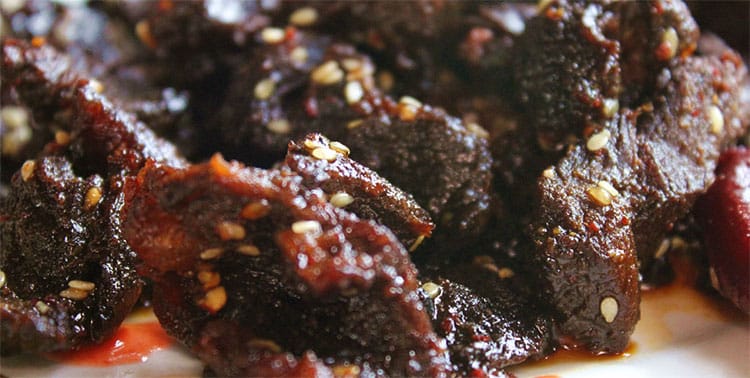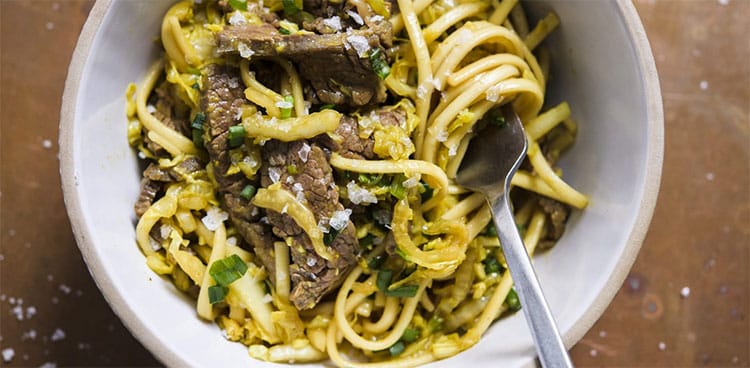Top 5 Tasty Traditional Tibetan Dishes

Traveling and eating go hand in hand. It does not matter if one is on a regular outing or has gone backpacking across the world, trying new delicacies all around is a must. Tibet, being a spot of tourist attraction for decades, due to its beautiful landscapes and mystic culture, has also never failed to provide an unforgettable culinary experience altogether.
The cuisine of the place is exquisite and unique, with major ingredients being dairy products, yak meat, and barley. The alpine environment allows for goats and yaks to be regularly seen, and as it is situated at a high altitude so vegetable and fruits are a less dominant feature in Tibetan food. On your next trip to Tibet, you should make sure to devour the top 5 Tibetan dishes which are as follows.
- Yak Meat
Yaks being exquisite animals, mostly seen on the Tibetan Plateau, are animals as majestic as any. They provide help in transportation of bulk materials in the rocky, mountainous regions, due to their built frame and sturdy legs. Their meat is considered a delicacy in Tibet, as it is abundantly available there, considering each male yak provides a substantial amount of meat and tastes of beef, which is an ever favorite. The meat’s high protein content and natural leanness are quite good for one’s nutrition, with the addition of a great balance of fatty acids. All in all, it is tender, juicy, and well, obviously, meaty. - Tibetan Momo
Momo seems to be a readily available dish nowadays, in every region of this world. While some countries have put their twist into it, the Tibetan Momo is an iconic father figure to all these new variations. Considered by many as debatably the unofficial national dish of Tibet, Tibetan Momo is a delicacy that is on the list of every person who plans to visit Tibet. Momo is mostly served steamed, with the bun filled with either meat or veggies, and a spicy sauce called chutney made of tomato, but there can also be variations ranging from fried to cooked in soup, and sometimes with chocolate syrup as well. The culture of Tibet has always included Momo as a traditional dish, being cooked in family kitchens for major family gathering events. Even Tibetan families have created different versions of the Momo by experimentation. - Tibetan Noodles
The dishes in China are mostly either rice-based or noodle-based. In Tibet specifically, noodle dishes are common, as rice is sparsely available. There are several variations and types of noodle dishes available as well, most famed being Thukpa, a general word for noodle soup, and another being Laping, summer street food seasoned with scallions, cilantro and garlic. There are types within types as well, as Thukpa has a type called Thenthuk, hand-pulled noodle soup, which just goes to show the obsession of people of Tibet with noodles. - Tsampa
There is a wide diversity in Tibet, but one thing all Tibetans have in common is their love for Tsampa. Tsampa is a nutty flour made from roasted barley. It is quite simple to prepare and is, therefore, a convenience food, with it being mixed with butter tea and dry cheese by hand to form a dough. This dish is of such crucial importance in Tibetan culture that Tibetans, collectively, are even called ‘po mi tsampsey’, meaning Tsampa-eaters, and also is used in traditional Buddhist festivals to throw into the air as a sign of joy and celebration. - Tibetan Yogurt
Tibetan yoghurt is not your typical yoghurt. It is made from yak milk and therefore is creamier due to high butterfat content in Yak milk. The flavor is improved by using sugar, but it, in itself, is quite strong. Tibetans eat this yoghurt with steamed rice, Tsampa, sweet potato root, salt, brown sugar, and many other variations. It is also considered a convenience food, like Tsampa.
The breathtaking views and the lip-smacking dishes are enough reason for one to book a plane ticket right this instant. The dishes referred here are a basic staple food, which can be found easily in Tibet. These dishes have so many versions, it almost feels like you are in the land of delicacies which seem so similar at first sight, yet hold so much of distinction in taste and texture.
Have you read?
Profile: Facts About Victoria’s Secret You Should Know.
5 Myths About Beautiful Mongolia You Should Not Believe.
5 Things To Keep in Mind before studying in Japan.
How Corporations Can Empower the Global Workforce of the Future by Vivek Sharma.
5 Things You Should Know Before Making a Visit to Auschwitz.
Add CEOWORLD magazine to your Google News feed.
Follow CEOWORLD magazine headlines on: Google News, LinkedIn, Twitter, and Facebook.
This report/news/ranking/statistics has been prepared only for general guidance on matters of interest and does not constitute professional advice. You should not act upon the information contained in this publication without obtaining specific professional advice. No representation or warranty (express or implied) is given as to the accuracy or completeness of the information contained in this publication, and, to the extent permitted by law, CEOWORLD magazine does not accept or assume any liability, responsibility or duty of care for any consequences of you or anyone else acting, or refraining to act, in reliance on the information contained in this publication or for any decision based on it.
Copyright 2024 The CEOWORLD magazine. All rights reserved. This material (and any extract from it) must not be copied, redistributed or placed on any website, without CEOWORLD magazine' prior written consent. For media queries, please contact: info@ceoworld.biz
SUBSCRIBE NEWSLETTER













